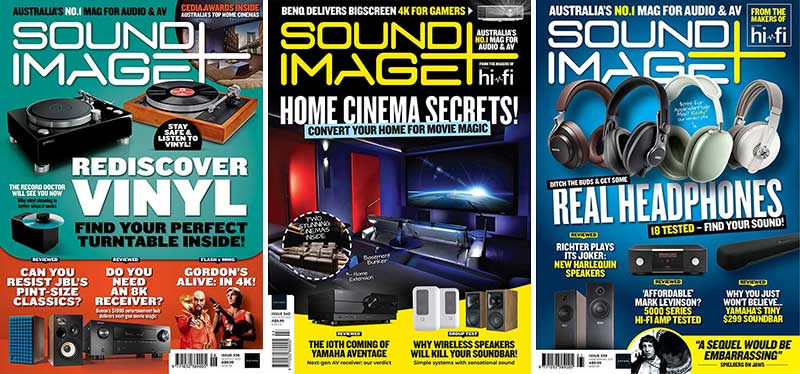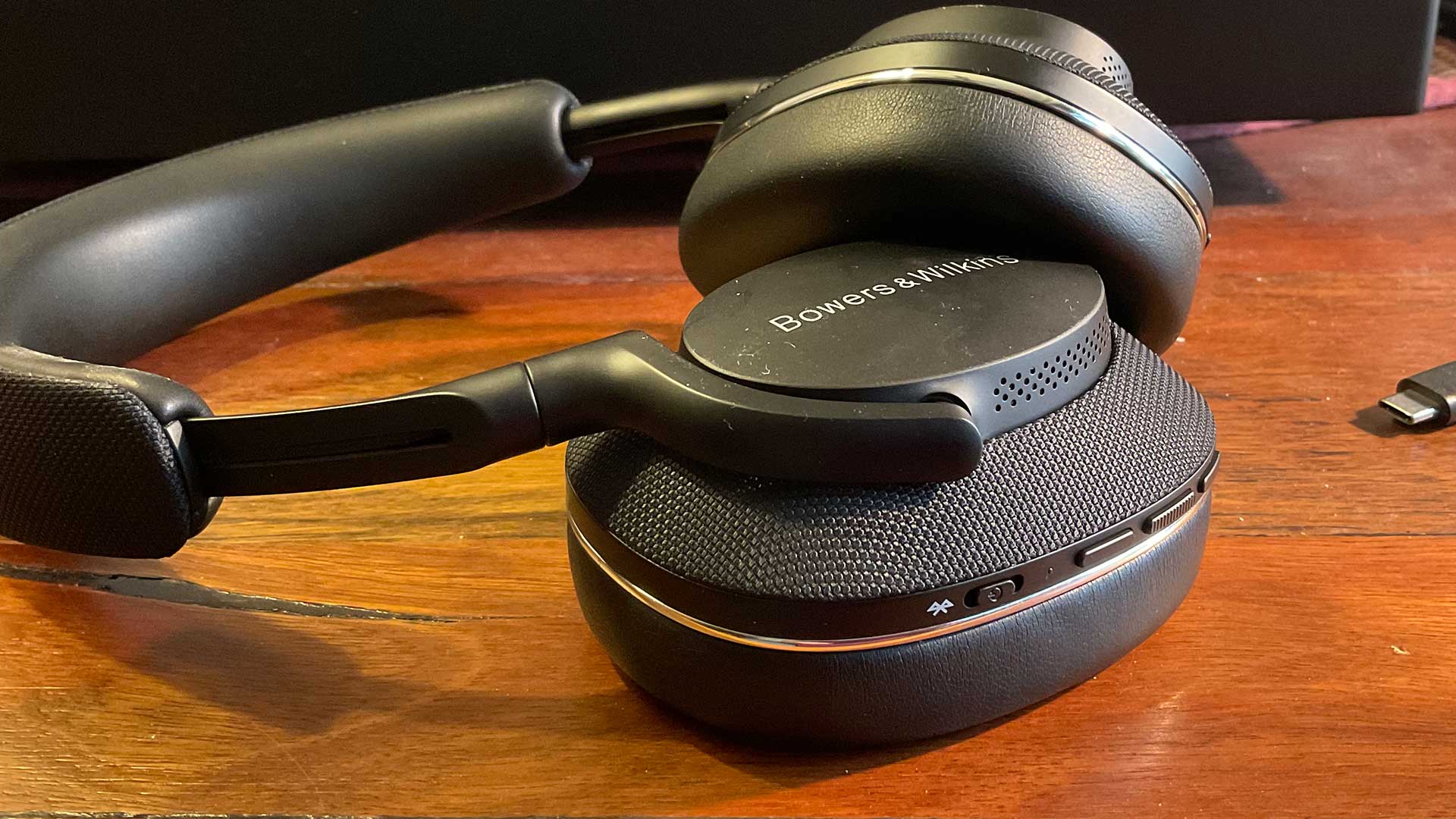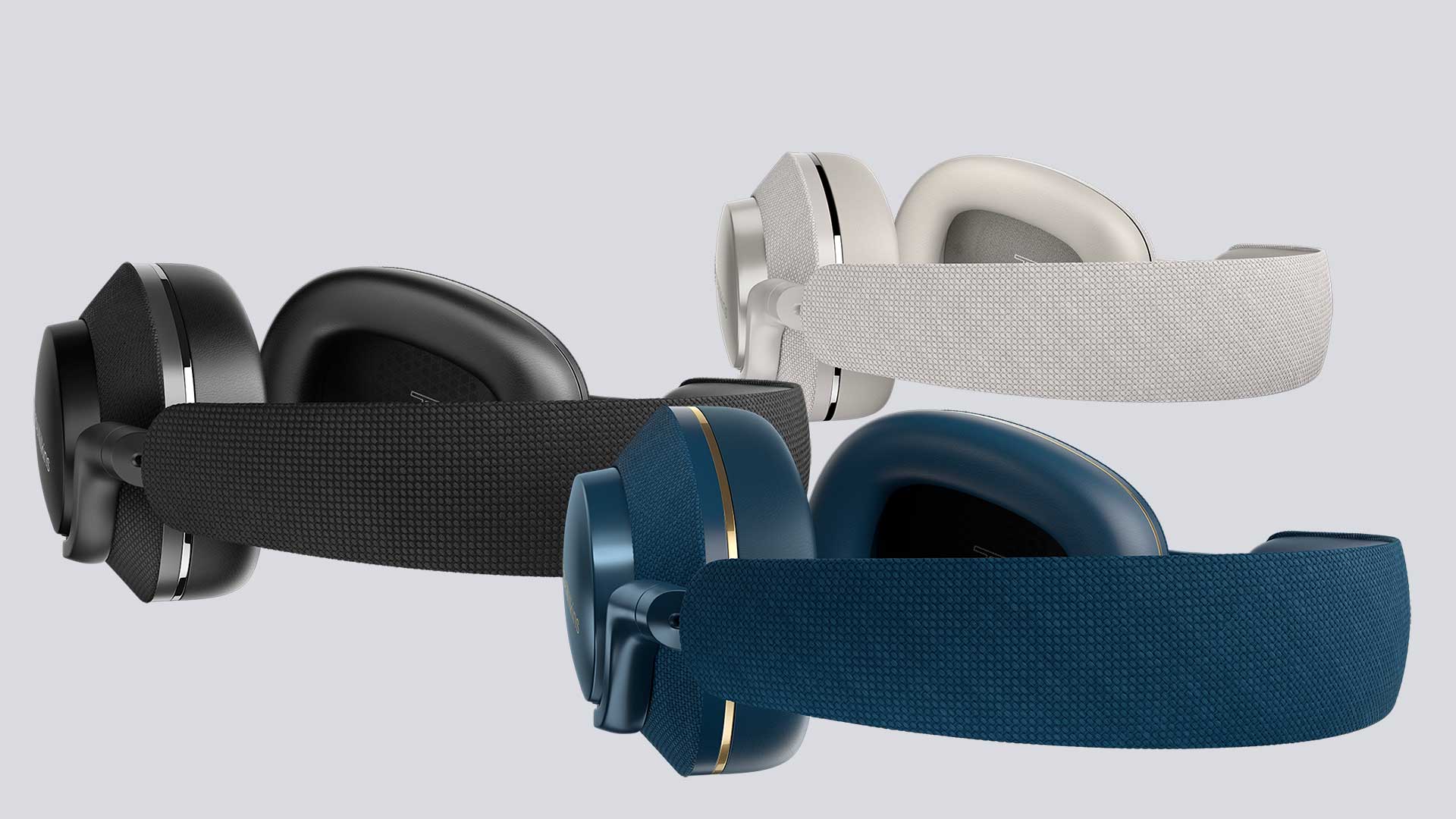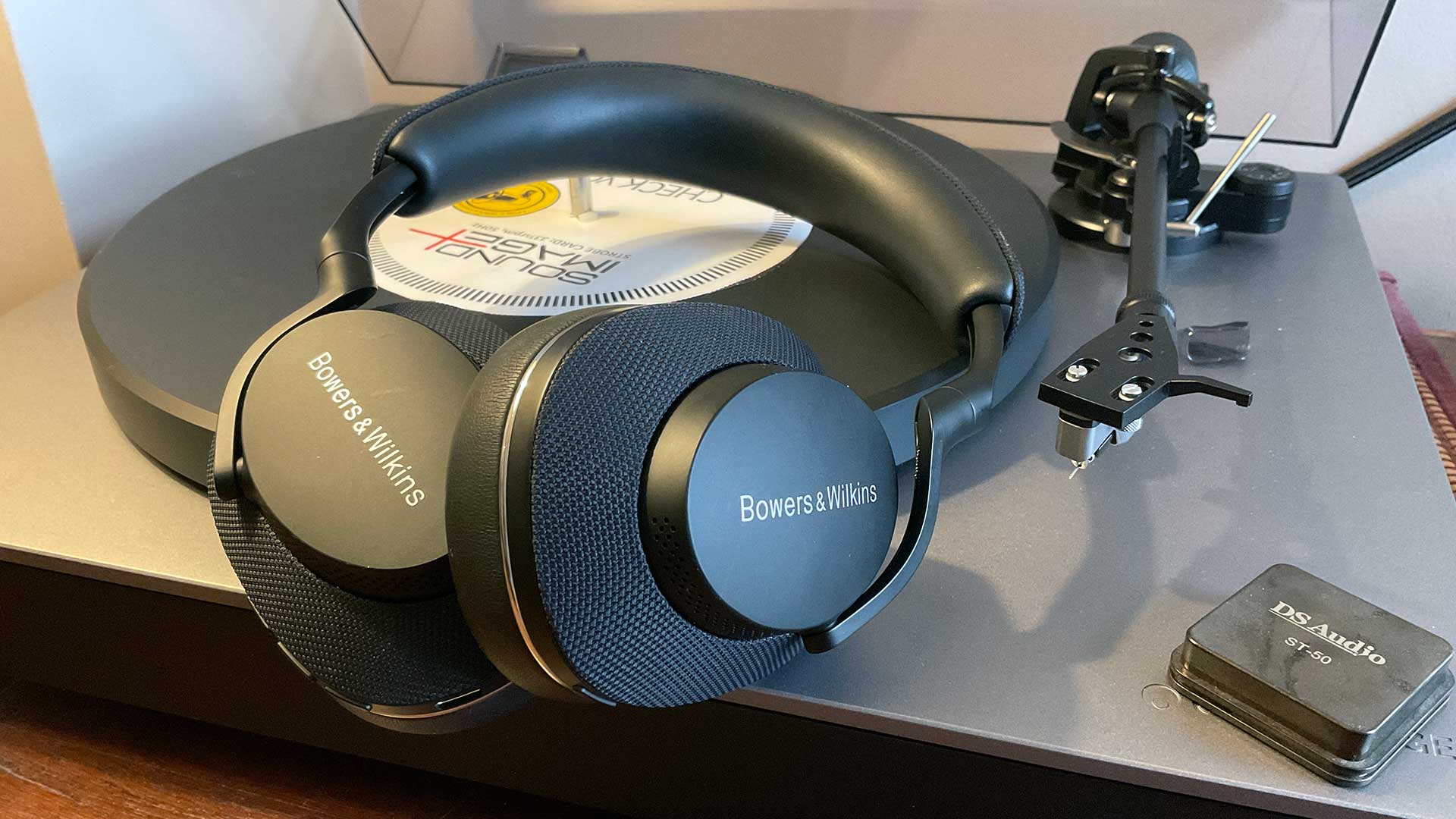Sound+Image Verdict
Bowers & Wilkins has successfully improved on the already-strong legacy of the original PX7 in nearly every way. They look and feel great, rock-steady wireless performers with effective noise-cancelling when out on the road, while at home their ability to play via their charging USB cable reveals their very best performance – open, dynamic and clear.
Pros
- +
Excellent sound quality
- +
Effective noise-cancellation
- +
Luxurious build
- +
USB-C digital option is excellent
Cons
- -
Strong market competition
- -
Higher-end Px8 model imminent
Why you can trust What Hi-Fi?

This review originally appeared in Sound+Image magazine, one of What Hi-Fi?’s Australian sister publications. Click here for more information on Sound+Image, including digital editions and details on how you can subscribe. Read What Hi-Fi?'s global, star-rated Bowers & Wilkins Px7 S2 review.
The wireless noise-cancelling Bowers & Wilkins Px7 S2 headphones on review here update the heart of the headphone offering from the renowned UK-based loudspeaker company. B&W has been making loudspeakers since the 1960s, but it is remarkably new still to headphones.
Its first Bluetooth model, an on-ear design, was released only seven years ago, and the original PX7 over-ears came in 2019, above their little PX5 siblings as a luxurious over-ear wireless noise-canceller prepared to take on the executive travel market dominated by the likes of Bose, Sennheiser and Sony.
Of course there hasn’t been a whole lot of executive travel since then... And with Sony and soon Sennheiser updating their key models in this field, it’s clearly time for a reboot. Enter the Px7 S2, a tweaked-up redesign of that 2019 model with all-new drive units angled in their earcups, improved active noise cancellation, upgraded microphones and new materials promising superior comfort, all in a slimmer profile than its predecessor, making it easy to store and carry.
It’s also the first time that Bowers & Wilkins has integrated the operation of a pair of headphones into its main Music app, rather than a separate Headphone app.
Meanwhile the company has also made the interesting decision to tell everyone it’ll have an even greater pair of headphones launching later this year (probably late September, we're advised) – the new PX8, promising “a brand-new cone technology” but a price at £499 / $549 / AU$899.95, so up in territory occupied by very few wireless headphones reside (we’re looking at you, Apple!).
These Px7 S2 headphones, though, are more affordable, if still at the high end of town for wireless noise-cancellers – £379 / $399 / AU$599.95, and available now from the Bowers & Wilkins website and select dealers. So, what’s new for the s2?

Build & finish

Type: over-ear closed dynamic Bluetooth wireless headphones
Bluetooth: 5.0 with SBC, AAC, aptX, aptX HD, aptX Adaptive; also cable and USB-C playback
Drivers: 40mm dynamic bio-cellulose driver
Quoted battery life: 30 hours playback from 2 hour charge; 7 hours from 15-min charge
Cables included: 1.2-metre USB-C to 3.5mm stereo jack; 1.2-metre USB-C to USB-C cable
Dimensions (wdh): 189 x 63 x 233mm
Weight: 307g
The first thing we noticed with the new Px7 is that Bowers & Wilkins has done away with the carbon-fibre arms used in the previous PX7 and PX5, replacing them with a solid engineering plastic composite.
The latest hi-fi, home cinema and tech news, reviews, buying advice and deals, direct to your inbox.
There was a lot of marketing fluff written around how the “woven carbon fibre arms of the PX7 mimic the strength and agility of the fastest vehicles in the world, channelling pure sound to you…” Strong they may have been, but unfortunately it proved difficult to achieve anything other than a patchy mottled matte grey finish on the material, rather less luxurious than may have been hoped.
The new Px7 S2 looks lovelier, and is notably uniform, in that Bowers & WIlkins is able to colour every element of the exterior, so that the black model is all-black (bar some chrome highlighting), while the blue model is entirely blue from its cups to its struts to its cushions, and the grey is similarly all-grey.
Our sample was in the black, looking sophisticated and understated, shall we say, clearly posh but no bling required given that the large ‘Bowers & Wilkins’ branding on each headcup will advertise your impeccable taste quite sufficiently.
The headshells and headband retain the tightly woven fabric which has a stain and moisture-repellant coating (cleanable, says B&W, by a gentle wipe or dab from a soft, damp microfibre cloth) and there are improved memory foam earpads, while those new yokes are now formed to swivel in either direction when you drop the headphones to your neck or fit them into the provided hard carrycase. There’s no second hinge-fold to go foetal, however, so the case remains somewhat larger than the equivalent for, say, Sony’s noise-cancellers.
The new Px7s sit for long periods just as comfortably as the previous model – the weight is almost unchanged from the previous model at 307g (down from 310g) but there has been a useful shaving of size, the headphones now some 3cm smaller in each dimension.
This is possible partly thanks to a new slightly smaller drive unit in the new PX7 compared with old, down from an oversized 43.7mm diameter to a more conventional 40mm, here described as a bio-cellulose driver (standard plant cellulose, we think, rather than the far more expensive type grown rather alarmingly by bacteria in vast vats).
A resin is also used on the cone to enhance stiffness; a speaker-style large roll surround is fitted as well, to assist linearity and reduce harmonic distortion, while its 20mm voice coil (up from 15mm in the original PX7) is wrapped around a Kapton (a Dupont polymer) former rather than paper; together with the thin mesh used to minimise coloration, Bowers & Wilkins says this driver system has better resolution and reduced distortion over the previous model, with a smoother high frequency curve.
The new angling of the drivers in the headshells further aim to keep a consistent distance to the listener’s ear from every point of the driver.
The 'Music' app
Rather than the previous 'Headphone' app used by Bowers & Wilkins, the new models will connect direct to the company’s 'Music 'app which now lies at the heart of their wireless and multiroom products, from the latest Zeppelin to the wireless Formation series. We should note that we were using a beta version of the Music app to assess the Px7 S2’s facilities in the period just before its official launch, and – as always with apps – it’s possible things may vary in the final release, or later.
For example the Music app offers music playlists (linked to Tidal) as well as other music services, but if we try to play those to the Px7 S2 headphones a message pops up that “In-app streaming is not currently available on this product”. But we’re told a future update will allow streaming direct from the Music app.
The app certainly connected easily and quickly to the new headphones, offering various sound settings that then ‘bake in’ to the headphones so that they will keep those settings even if used with a different device, which is particularly important if you have, say, a particular EQ preference.
This was confirmed to us by the company’s Andy Kerr in the UK, who also admitted, however, that EQ is a bit of a problem for Bowers & Wilkins, because, well, to abandon modesty, it simply thinks it knows best. It has carefully tuned these headphones and would prefer that you don’t mess with them, ideally. But in this age where everyone gets to define their own personal truth, they couldn’t leave the EQ section showing just a message to F-off and listen, so they’ve deigned to include simple (and relatively mild) bass and treble sliders.
There’s also ‘environment control’, which gives access to the three main modes of operation – noise cancellation on, pass-through (see below), or NC off. On the previous PX7s, the noise cancellation could be set to three different levels; that option appears now to have been dropped.
Note you don’t have to use the app to select these modes, as a ‘quick action’ button on the left headshell shuttles through them, using usefully differentiated beeps to let you know which is which (if you can’t already tell by listening).
You can, however, use the app to reallocate this ‘quick action’ button to instead summon your voice assistant of choice (i.e. Siri if you’re using an iPhone, Google or, if prioritised, Alexa on an Android devices).
You can usefully prioritise your Bluetooth connections, so that your headphones will connect on start-up to your phone, not the TV you were watching on headphones last night.
You can choose whether the headphones go into auto-standby after 15 minutes (useful, since you otherwise have to remember to physically turn them off), and whether you want the ‘wear sensors’ active so that tunes stop when you lift an earcup.
This last option has three sensitivity settings, and we thought none of them was working, but in fact it just takes about a second for playback to stop. One glitch, probably a function of our using the app in beta, was that once we’d switched the ‘quick action’ button to activate the voice assistant, we couldn’t get it to switch back to shuttling between modes.
Finally you can use the app to rename or entirely reset the headphones (we did this to retrieve the lost ‘quick action’ shuttle mode).

Sound quality
The Px7 S2 can actually play three ways – wirelessly, or using the supplied analogue cable, or down its USB-C charging cable from a connected computer. Once fully charged the headphones have a claimed 30 hours of battery life, with a 15-minute quick recharge impressively able to provide up to seven hours of additional listening time.
The Bluetooth 5.0 implementation here includes the basic SBC codec, the AAC codec that will provide better quality for Apple users, and then the aptX, aptX HD and aptX Adaptive codecs which can provide Android devices a higher-quality connection, though still lossy.
The aptX Adaptive can achieve low latency handy for watching video content (this will depend on your phone’s implementation), but more importantly aptX Adaptive can scale its bit-rate dynamically between 279kbps and 420kbps to suit the wireless environment, so that in heavy RF environments it will automatically drop quality to avoid connection issues.
Even the top bit-rate is still, however, only around a third that required for CD quality, and a fifth of the advertised 24-bit wireless transmission. Even allowing for some 40% saving from lossless data compression, this is not lossless high-res wireless, rather a data-compressed lossy signal in which information has been thrown away. There is, as yet, no such thing as lossless high-res Bluetooth.
That’s the tech truth of it, but this won’t stand in the way of a wonderfully enjoyable listening experience from the Px7 S2, and a stable one as well – in all our wanderings with these headphones we never once suffered a drop-out from the phone in our pocket, and at home we could leave the room, even the house, before the range was exceeded.
As for the sound, it is solid, powerful and very well balanced, and remarkably consistent whether or not noise cancelling is engaged. Many headphones change their sound significantly when the useful but destructive process of ANC is added to playback, but here there’s just a slight thickening of upper mids, enough that we’d still recommend listening without ANC for maximum clarity, but with little penalty for adding it when external noise needs to be excluded. Indeed a little extra bass will assist the balance in such scenarios.
At home, however, turn ANC off for just a tad better clarity of midrange and soundstaging. The bass drone under the opening of Alex The Astronaut’s Growing Up, for example, was a little over-swollen with ANC engaged, underpinning things less intrusively without it and allowing the track to undertake its growing arc of complexity unimpeded. This track, played at the maximum level available from the Bluetooth connection, also showed what a crystal clear job the Px7 S2s can do on a vocal even while multiple layers are rising in strength below.

Even when there’s a big modern synth bass kicking away, as on Doja Cat’s Vegas from the Baz Luhrmann ‘Elvis’ soundtrack, these are headphones which can slam a recording home; they also punched out Dobby’s Walk Away featuring the Merindas, delivering both the bass drops and the wide reverb treatments on the vocals and harmonies. A bass sweep showed the headphones creating output even from frequencies below 20Hz, so you certainly won’t be missing any action down at the bottom.
Another notable strength is playing at top available Bluetooth level without any sign of distress. Crank a classic like Walk On The Wild Side and you can push Herbie Flowers’ double-tracked bass to the max over the twin panned guitar jangles before the snare shuffle starts and Lou Reed enters stage centre to begin the story-telling.
It was no surprise to find a Bowers & Wilkins product at home with natural acoustic arrangements; Bill Berry & His Ellington All-Stars ‘For Duke’ is a fabulous recording, and the panned saxophones flanking the piano and drums on the opening Take the A Train were delightfully breathy and alive.
Listening to speech also showed how well toned these headphones are; human voices on podcasts sounded exactly as recorded (we used our own recordings to check this) with no excessive mid-bass bloom on male vocals and just enough crispness to ensure clarity, though these are not headphones which sound especially open or spacious. Sometimes we thought them a little short on edge; playing the O2 live version of Leonard Cohen’s Tower of Song the new Px7s did a good job of holding his tricky broadband vocal all together in a single piece, but his voice still lacked a little definition, so that he emerged marginally mumbly as he thrilled the London crowd.
Similarly there was a little lack of space surrounding classical recordings, so that our favoured von Karajan recording of Holst’s Jupiter had all its pieces and dynamics in place, but something of a lid on the auditorium acoustic. You’re unlikely to notice this on the road, of course (where ANC may also thicken the upper bass and lower mids somewhat). And if it were to bother you in quiet conditions at home, we’d suggest trying the cable or the USB-C listening option.
Each clarifies the sound, the USB-C digital option most of all, revealing the lower-mid confusion underlying Jupiter as being a rather rumbly room acoustic, and allowing more sense of the higher auditorium reflections around a far more complete and clean orchestral sound. Using USB-C with ANC off, the strings could really soar and the dynamics were unleashed: witness the impact of the tympani midway through Uranus later in The Planets, and the massive chord near its close.

This USB-C connection, in fact, transforms the home listening experience through the Px7 S2 significantly enough to suggest a careful consideration for critical listeners of fixed-cable quality against Bluetooth convenience in the home.
One time we chose that convenience was while testing a turntable (above) which offered Bluetooth wireless output, so that we were able to enjoy the strange and unusual pleasure of strolling the home listening wirelessly to vinyl records. This is an addictive experience, and works nicely in a two-person home where you can use noise-cancellation to mask the preferred TV chatter of your partner while listening instead to the Px7s’ delivery of some vinyl.
From our Temptations’ ‘Sky’s the Limit’ LP they opened up the glorious mix of Just My Imagination, where silky-smooth harmonies and Jerry Long’s strings arrangements dance around a groove from the Funk Brothers so solidly delivered by these heapdhones that we could not resist a little dance. (We are glad to describe this to you in print, without the distracting reality of the missus pointing and laughing at us.)
Noise-cancelling here is good, moderately intense but not quite to the point of creating imbalance in the ears or eyeballs, so we didn’t crave the different levels that were made available in the original PX7. The ANC was highly effective in banishing the rumble of a bus commute, and we have every confidence of it cancelling plane drone too, though we didn’t get in one to try. The noise cancellation has the use of four microphones, and there are two more for making calls, which in our trials came through rather quieter than the curtailed music, but very clear to hear on both ends of the conversation.
The ‘Passthrough’ ambient mode is effective as soon as you’re in an environment with noise, allowing you to hear airport announcements, have a little more traffic awareness, or eavesdrop on nearby conversations. We wouldn’t use it for general awareness in quiet spaces; it doesn’t sound like an open pair of headphones that are naturally letting in sound, a trick we’ve heard only from Apple’s AirPod Maxes, with which you can sit outside and listen to the wind in the trees as well as your music.
There’s a little Passthrough bonus for hip-hop fans: if you run your thumb around the back of the raised branded sections on either headshell you’ll hear a noise as you cross the microphone position. By moving your thumb back and forth there, you can make record-scratching sounds to add to your music. So we could rename this ‘Passthrough/Scratch mode’.

Just occasionally the Px7 S2s could seem overwhelmed. The Bluetooth presentation of the musical backing to the intense American Trilogy section in Baz Luhrmann’s ‘Elvis’ became squashed beneath the vocal and background cheers – which admittedly caused some but less distress to on reference Sonys and Apples, yet it played fine through a full-sized hi-fi system, and when the Px7 S2s played this sequence via USB-C without ANC; in that configuration the Px7 S2 outdid both those other brands.
The generally-impressive abilities with modern bass also had its limits: the monstrous three bass notes on Tyler, The Creator’s EARFQUAKE dominated the drivers such that they couldn’t simultaneously hold the vocal and other tracks fully clear above it. But then this is true of most rival headphones, and many loudspeakers too.
Verdict
Bowers & Wilkins has successfully improved on the already-strong legacy of the original PX7 in nearly every way. The Px7 S2 headphones look and feel great, they are rock-steady wireless performers with effective noise-cancelling when out on the road, while at home their ability to play via their charging USB cable reveals their very best performance – open, dynamic and clear.
The company is baiting potential purchasers with news of the AU$899.95 Px8 headphones to come, so you may want to wait to see what wonders those bring. But we very much doubt anyone rushing to enjoy the Px7 S2 will suffer any buyer’s remorse. You’ll be too busy enjoying the music delivered by these fine headphones.

Jez is the Editor of Sound+Image magazine, having inhabited that role since 2006, more or less a lustrum after departing his UK homeland to adopt an additional nationality under the more favourable climes and skies of Australia. Prior to his desertion he was Editor of the UK's Stuff magazine, and before that Editor of What Hi-Fi? magazine, and before that of the erstwhile Audiophile magazine and of Electronics Today International. He makes music as well as enjoying it, is alarmingly wedded to the notion that Led Zeppelin remains the highest point of rock'n'roll yet attained, though remains willing to assess modern pretenders. He lives in a modest shack on Sydney's Northern Beaches with his Canadian wife Deanna, a rescue greyhound called Jewels, and an assortment of changing wildlife under care. If you're seeking his articles by clicking this profile, you'll see far more of them by switching to the Australian version of WHF.


